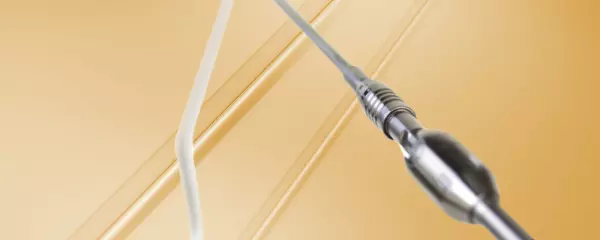
Fixation Instruments Rudolf Storz GmbH offers a large product program for Fixation/ stabilization...
Portal and digital medical technology fair of the largest MedTech cluster in Germany

A new skull fixation system has been purchased by the Center for Pediatric Neurosurgery. The new equipment allows the surgeon to position a patient's skull in a horizontal position, allowing him or her to undergo complex operations without pain. The Center will be able to perform 350 complex operations annually using this new equipment. The cost of this renovation is approximately UAH 656,000. This new equipment will increase the number of procedures performed at the Center.
During the installation, the doctor will place the skull fixation system. The doctor will then use a BOWA electrosurgical device to stop the bleeding. The DORO skull fixation system will help the doctor stabilize the patient's brain. ADORO has an advanced magnetic resonance imaging (MRI) compatibility, as well as the ability to tolerate high doses of radiotherapy. The equipment will help doctors perform more complex surgeries with greater accuracy.
To implant the skull fixation system, the neurosurgeon will first make a craniotomy. Once he has placed the brain, he will have to attach a bone flap to the skull. There are three different systems that are available, each using different methods. The Neuro Plating System uses self-drilling titanium screws to secure the bone flap to the skull. The CranioFix(r)2 system uses titanium cranial clamps to hold the bone flap in place.
Alternatively, a DORO skull fixation system will allow a surgeon to fix the skull with one side. The system uses screw and titanium plate fixation to secure bone flaps. Because the bones of a child's skull are not fully formed, a pin is insufficient for the operation. The DORO system is equipped with special clamps that do not damage the child's skull. Besides reducing the operating time, the system also improves the patient's safety.
The DORO skull fixation system was the first double-sided fixation system to be introduced in the market. This allowed neurosurgeons to achieve maximum flap stability in a minimal amount of time. Aesculap's CranioFix2 System has built on the success of its predecessor by adding additional features. With this device, a bone flap can be fixed in less than two minutes, minimizing the operating time and ensuring the safety of the patient.
The Quick Tap system is a three-level autoclave tray with everything needed to perform neurosurgical rigid fixation. It features titanium plates, panels, and screws in an easy-to-use way. Its low-profile design is also an advantage. The surgeon can fixate the flap with the QuickTap system in under a minute, without removing the flap itself. The removable skull plate is easily removed after surgery, and the surgeon does not need to remove the instrument.
The Skull fixation system is a new type of fusion device that allows the skull to be held in place. The system allows the surgeon to attach a titanium plate to the bones in one plane, thus avoiding the need for multiple surgical plates. This device is a permanent solution that can be used for a long time. However, it is important to understand the benefits of this device. For instance, the TIGAR-S technology makes the patient more comfortable and ensures that he or she has a better outcome.
Become a digital exhibitor yourself in the online portal of the largest and best-known MedTech cluster region in Germany and inform the world of medical technology about your products and services as well as about news, events and career opportunities.
With an attractive online profile, we will help you to present yourself professionally on our portal as well as on Google and on social media.